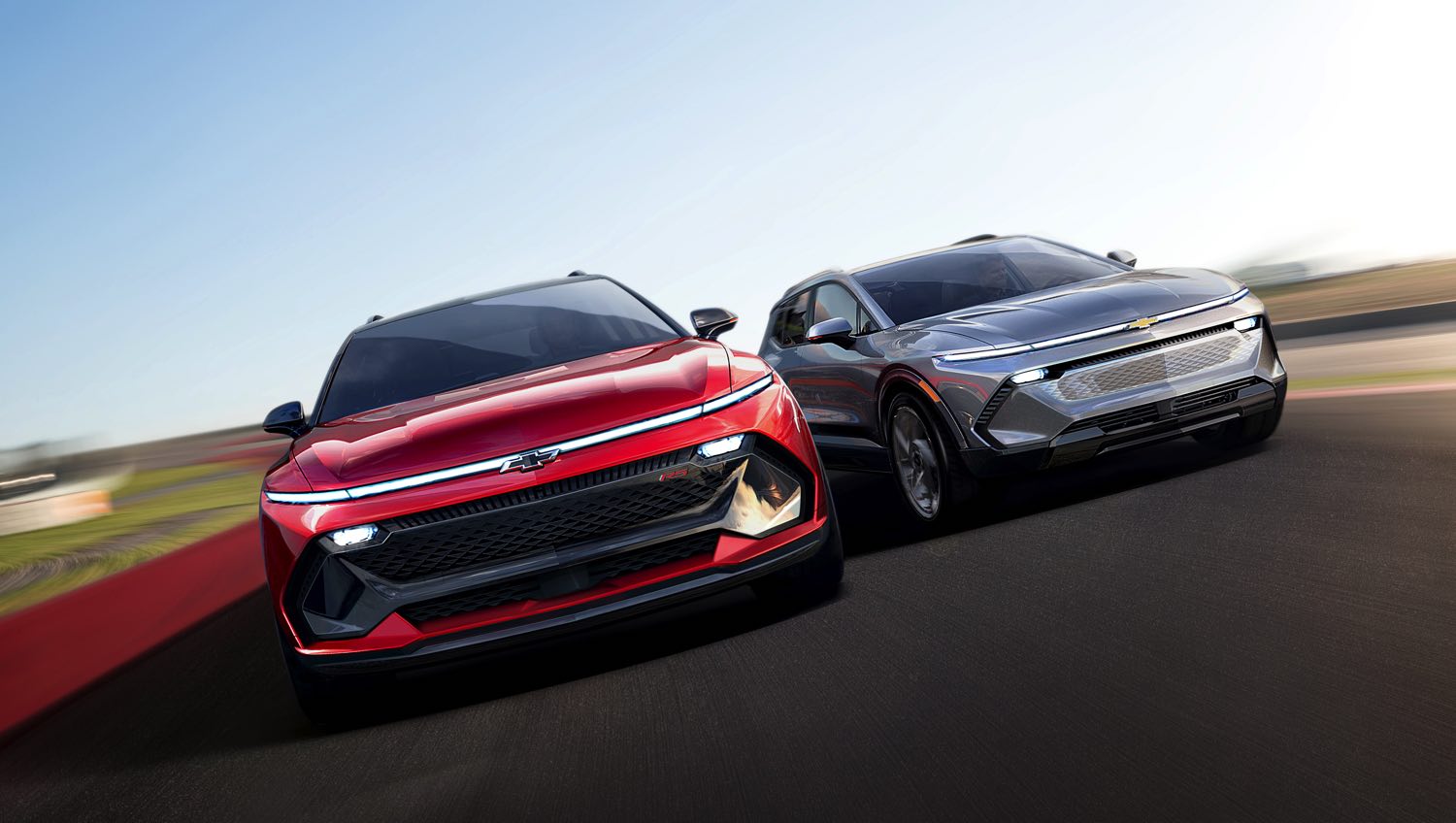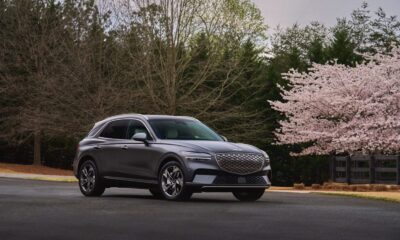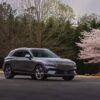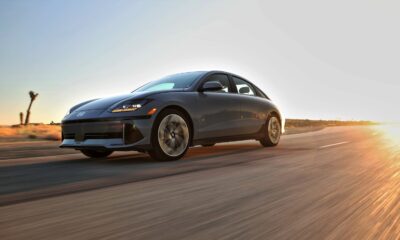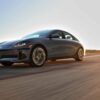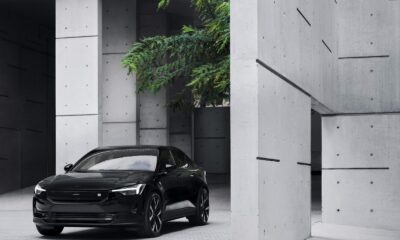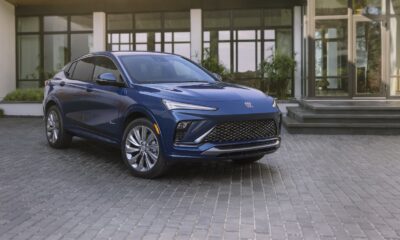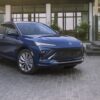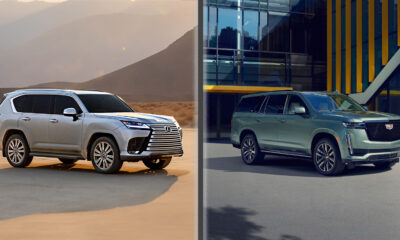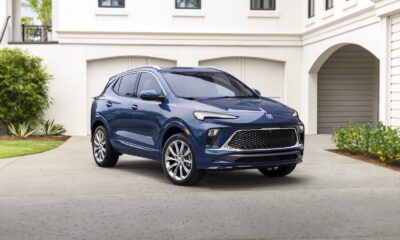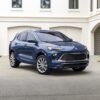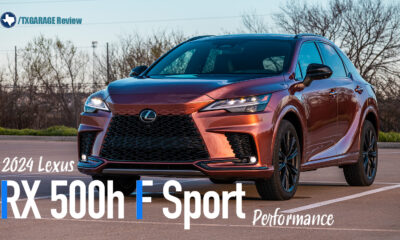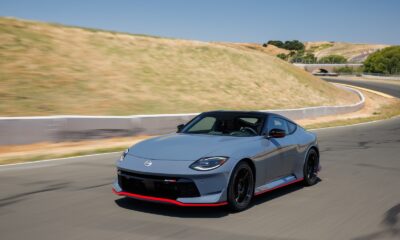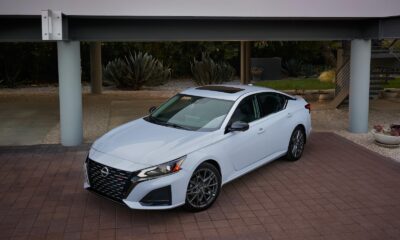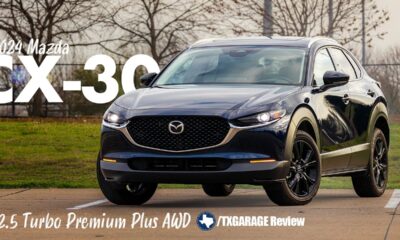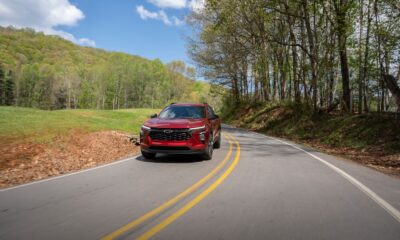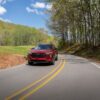Car Reviews
Climate Change? A CLIMACTIC CHANGE!
Climate Change?
A CLIMACTIC CHANGE!
Driving down the highway in a 2022 Chevrolet Equinox, I was struck with how a vehicle that was once revolutionary is now unremarkable except for what it says about the near future.
It’s been nearly two decades since Chevy rolled out the Equinox as a 2004 model. It and the GMC Terrain were GM’s first crossover SUVs, meaning they rode on a car-like chassis instead of the truck-like, body-on-frame Chevy Tahoe and/or GMC Yukon.
Easier to drive and more fuel-efficient, the compact SUVs became popular, and not just because yours truly gave them strong buy recommendations. With ample seating and cargo space, the General’s little SUVs were a perfect fit for young families, social millennials (there are some – I’ve seen them), and empty nesters.
Over the years the vehicles developed solid reputations for safety and reliability. In 2021, the Equinox was second in Chevy sales only to the Silverado – a distant second, one must add. Those two models today are the foundation of General Motors’ unprecedented profitability and cash flows.
The latest iteration of the Equinox is an acceptable car. It rides and handles like a Chevy – acceptable. The interior has cheap plastics and a dull design but is acceptable. Fuel economy, at a combined 23 mpg, is much less than the 30 to 40 mpg found in some competitors but is acceptable to many buyers.
GM will continue to build this SUV for years to come. As with the Silverado, the R&D is done, the factory tooling is amortized, the kinks worked out. In 2021 GM, no longer a car company, raked in a record $14.3 billion in operating profit and says it expects more of the same this year. Ads touting tailgates seem to work.
Watching GM soak cash out of vehicles that will soon be obsolete is as fascinating as observing the massive outflow of water that precedes a beach. For the past few years, the General, under the leadership of CEO Marry Barra, has poured those dollars, as well as the talents and hearts of its best and brightest, into transforming the corporation into a maker of electric light trucks and SUVs.
The same sort of thing is happening at Ford, where new CEO Jim Farley has announced plans to spend $20 billion building factories and developing EVs. Barra has previously announced $35 billion in EV spending, but this week said she plans to push the accelerator harder. She told investors that for the next several years she will prioritize EV investments over maximizing profits and paying dividends.
Lessons learned from the chip shortage, both CEOs are building vertically integrated companies, complete with chip mills and battery factories. Both are investing heavily in downloadable software services, which they see as critical to fleet buyers.
Where they differ is in the range of vehicles. Farley cut his teeth at Toyota – and made it clear from day one that he wants Ford to be equally tenacious about quality – plans to build a few EVs well. The Mustang Mach-E has been a hit with critics and buyers, the E-Transit commercial van is selling well, and the F-150 Lightning is due in showrooms in May.
GM is looking to develop a much larger portfolio, bringing 30 EVs to market by the end of 2025, all powered by Ultium drive, a family of five interchangeable drive platforms, and three motors.
Prices will drop
The first of those, the GMC Hummer EV (starting around $105,000) is on sale. The Cadillac Lyriq (with a base of $59,990) is loading up on trucks and heading to dealers.
Those two feed into an impression that electric cars are for the wealthy. The reality is that manufacturers know the only way to reach critical mass is to sell in volume. A wide range of EVs is set to sell for substantially less than the median new vehicle price of $45,000.
An SUV version of the subcompact Chevy Bolt, the Bolt EUV, starts at $33,500, the Mazda MX-30 EV at $33,470 and, the Hyundai Kona Electric at $34,000.
The Silverado EV, which GM says will start at around $40,000, is still a year away. Also a year away are Ultium-based versions of the Chevy Blazer and Equinox, which Barra last week said will sell for around $30,000.
A notch above those is a host of lovely midsize electric SUVs. We’ve driven the Volkswagen ID.4 and came away impressed with what is a powerful, pleasant, and competent vehicle. It is another example of what J.D. Power discovered in its most recent satisfaction survey: Once people get into EVs, they never want to get out.
The Hyundai Ioniq 5 and its corporate twin, the Kia EV6, will sell in the $41,000 to $56,000 range. Early reviews are that these are exceptionally well-executed, roomy, and comfortable family vehicles.
The Nissan Ariya, with dual motors, AWD and selling for $45,950 to $58,950, is another stunner. Nissan plans to feature it and the new Z Coupe in its Super Bowl ads.
Auto journalists like to cite facts and figures, but an often-overlooked key number is wheelbase, the distance between the center of the front and rear wheels. No matter how well one massages the suspension, as Toyota does admirably with the latest RAV4, a shorter wheelbase results in a choppy ride. Rear passengers are going to be much more comfortable riding within a longer wheelbase.
For the past few years, compact and midsize SUV wheelbases have hovered around 103-104 inches. The Ariya, Ioniq, and ID.4 all have wheelbases in the 109-inch range, a benefit of building on a well-balanced platform.
Prices cited, of course, are before the maximum possible Federal tax credit of $7,500, though it is impossible to predict whether a Congress that can’t agree on bathroom breaks will ever get around to authorizing and funding tax breaks for EVs – especially ones selling to the middle class.
That may not be necessary. The administration proposes to spend $7.5 billion for sales incentives and to expand the nation’s charging network. That is a drop in the bucket compared to the more than $515 billion automakers plan to invest in EVS through the end of this decade.
Big chunks of private money are going toward building out the charging network, where consortia of automakers, utility companies, and private equity investors are big players. Even Big Oil is getting into the game.
Another focal point of research and development is getting more range out of electric batteries and reducing charging time. Scientists at Purdue University, working with Ford, have figured out that the chief hindrance to ultra-fast charging is the temperature of the cables, and have figured out how to charge batteries in five minutes.
Analysts expect as many as 50 electric vehicles to be available by the end of this year.
Volkswagen, Hyundai, Kia, and to lesser extents Toyota, Honda, and Stellantis are gearing up to give Tesla, the world’s largest electric-car builder, a run for its money. In all, some three dozen companies are soon to bring electric vehicles to market. In the meantime, Tesla is building gigafactories around the world.
At some point, one assumes, there will be more EVs than buyers in the market. Sales incentives will return because manufacturers are working with wide profit margins. At scale, electric vehicles cost less to produce than ones with internal combustion engines – fewer labor hours, fewer parts on the car and in inventory, simplified engineering.
Let me pause here to let my deep East Texas readers know that I get it. Research says that EV adoption is another red-state, blue-state divide. Dealers in our neck of the woods know their customers and are loathe to stock EVs. This revolution is being played out on the coasts and in the big cities, where the majority of Americans live.
Try to remember that the move to electric vehicles is an international one and, across the planet, that’s where the smart money is going. The United States is no longer the most important car market. In Europe and Asia, even Communist China, governments are under the gun to clean the air.
That roar you hear is the tsunami which is about to hit. Change is coming. Just look at the Equinox.



